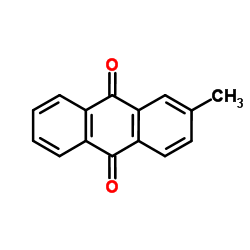Effect of additives on fiber yield improvement for kraft pulping of kadam (Anthocephalus chinensis).
D Biswas, M Misbahuddin, U Roy, R C Francis, S K Bose
Index: Bioresour. Technol. 102(2) , 1284-8, (2011)
Full Text: HTML
Abstract
Projected decline in future wood resources has prompted researchers to try various additives in existing pulping processes for fiber yield improvement. Many studies have been conducted in the past aimed at improving kraft pulp yield with the use of additives in the cooking liquor. In this study, the effects of anthraquinone (AQ) and 2-methylanthraquinone (MAQ) on the pulp yield of kadam (Anthocephalus chinensis) were investigated. Three different active alkali doses (14%, 16% and 19% as NaOH) along with 0.1% of AQ or MAQ on chips were used to obtain various levels of delignification of the hardwood. Addition of AQ or MAQ to kraft pulping, increased fiber yield (0.5-2.7% on chips) and improved delignification selectivity (lignin vs. carbohydrate removal). Increases in pulp yield due to AQ or MAQ were more significant at lower doses of active alkalis. The viscosities and the physical strength properties of the pulps with kappa numbers 16-19 were comparable to kraft although there was a minor decrease in tensile strength for the kraft/MAQ pulp.Published by Elsevier Ltd.
Related Compounds
| Structure | Name/CAS No. | Molecular Formula | Articles |
|---|---|---|---|
 |
Tectoquinone
CAS:84-54-8 |
C15H10O2 |
|
[Chemical constituents of Morinda officinalis How].
1991-11-01 [Zhongguo Zhong Yao Za Zhi 16(11) , 675-6, 703, (1991)] |
|
[Studies on the chemical constituents from stem of Chirita l...
2006-02-01 [Zhongguo Zhong Yao Za Zhi 31(4) , 307-8, (2006)] |
|
PPARγ agonist from Chromolaena odorata.
2012-12-28 [J. Nat. Prod. 75(12) , 2076-81, (2012)] |
|
Isolation, structure elucidation, and cytotoxic evaluation o...
2011-01-28 [J. Nat. Prod. 74(1) , 82-5, (2011)] |
|
Synergistic TRAIL sensitizers from Barleria alluaudii and Di...
2012-03-23 [J. Nat. Prod. 75(3) , 394-9, (2012)] |